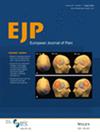Pain Catastrophising Amplifies Parietal Responses to Painful Laser Stimulation in Healthy Controls
Abstract
Background
Pain catastrophising is a maladaptive cognitive–emotional trait linked to greater pain severity and poorer outcomes, yet its neurophysiological correlates remain unclear.
Objectives
We tested whether pain catastrophising amplifies cortical responses to nociceptive input, independent of subjective pain intensity.
Methods
Fifty-two healthy adults underwent EEG during painful laser stimulation (n = 29; mean age 24.3 ± 10.9 years; 55.2% female) or non-painful electrical stimulation (n = 23; mean age 23.3 ± 8.5 years; 56.5% female). Each trial comprised a triplet of stimuli (S1, S2, S3) with a 1.5-s interstimulus interval; 30 triplets were delivered per modality. Associations between Pain Catastrophising Scale (PCS) scores and amplitudes of laser-evoked potentials (LEP-N2P2) and somatosensory-evoked potentials (SEP-N1P2) were tested using mixed-effects models, with trial-level pain ratings as a covariate.
Results
Higher PCS scores were associated with greater LEP-N2P2 amplitude for the first stimulus (S1) in the painful condition, independent of pain ratings, at the parietal midline electrode (Pz). No associations were observed between PCS and SEP-N1P2 in the non-painful condition, or between PCS and early N1 components of LEP or SEP.
Conclusions
Pain catastrophising selectively amplifies later-stage cortical responses to painful stimuli, strongest at first presentation (S1) and localised to parietal Pz channel, with no effects in non-painful controls stimulation modality. These findings support LEPs as mechanistic biomarkers of catastrophising-related vulnerability. Combined with psychological assessment, such markers could improve early screening, risk stratification, and personalised interventions targeting maladaptive salience and attentional processes in pain.
Significance Statement
Pain catastrophising was associated with amplified laser-evoked potential (LEP-N2P2) responses during painful, but not non-painful, stimulation in healthy adults. The effect was localised to the parietal midline, strongest for the first stimulus in a sequence, and diminished with repetition. These findings suggest modality-dependent cortical modulation and highlight LEP-N2P2 as a potential neural marker of maladaptive pain processing.

 求助内容:
求助内容: 应助结果提醒方式:
应助结果提醒方式:


